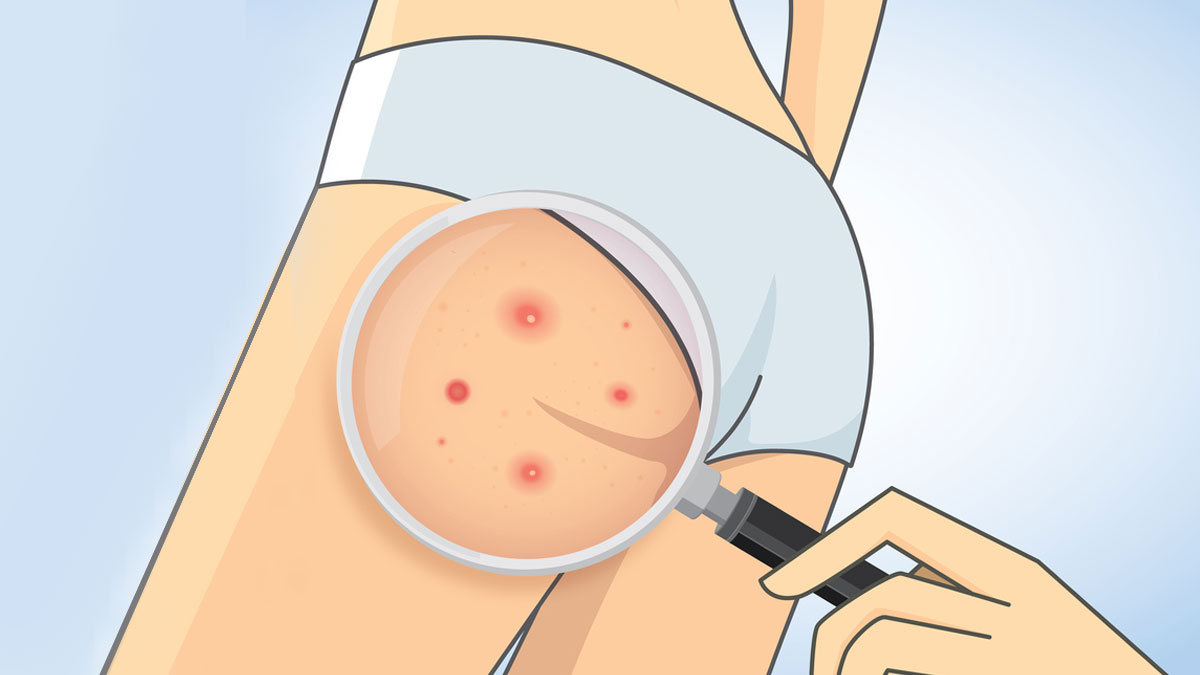How to Fix Chicken Skin on Butt: A Beautician's Guide
For beauticians, understanding the nuances of skin care is essential, especially when it comes to addressing specific skin concerns like chicken skin on the butt. Officially known as keratosis pilaris, this condition is common, yet many clients are often unaware of what it is or how to treat it effectively. As a beautician, being equipped with the right knowledge can help you provide valuable advice and treatments to your clients.
Keratosis pilaris is characterized by rough, small bumps on the skin, often resembling goosebumps or 'chicken skin'. This condition occurs when the skin produces too much keratin, a type of protein. The excess keratin forms a plug that blocks the hair follicle, resulting in the characteristic bumps. While it's more common on the arms, thighs, and cheeks, it can also appear on the buttocks, leading to discomfort and self-consciousness for many.

Understanding the Causes of Chicken Skin
Before diving into how to fix chicken skin on the butt, it's crucial to understand the causes. While the exact cause of keratosis pilaris isn't fully understood, several factors can contribute:
Genetic Predisposition
Genetics play a significant role in the development of keratosis pilaris. If a client's family has a history of this condition, they are more likely to experience it themselves.
Dry Skin
Dry skin can exacerbate the symptoms of keratosis pilaris. As a beautician, recommending a moisturizing routine can help alleviate some of the dryness and improve skin texture.
Environmental Factors
Cold, dry weather can worsen the condition. Clients might notice an improvement during the warmer, more humid months.
Effective Treatments for Chicken Skin
As a beautician, you can guide your clients through several treatments to help improve the appearance of chicken skin on the butt. Here are some effective strategies:
Exfoliation
Regular exfoliation can help remove the dead skin cells that contribute to the buildup of keratin. Recommend exfoliants containing alpha hydroxy acids (AHAs) or beta hydroxy acids (BHAs), which can penetrate the skin and dissolve the plugs. You can read more about how glycolic acid plays a role in treating these bumps.
Moisturizing
Moisturizing is crucial. Suggest products that contain urea, lactic acid, or ceramides to help keep the skin hydrated and smooth. Ensuring that clients understand the importance of a consistent routine is key.
Professional Treatments
In some cases, clients may benefit from professional treatments. Chemical peels and microdermabrasion can be effective in reducing the appearance of keratosis pilaris. These treatments help to remove the top layer of skin, promoting new, healthy skin growth.
Consult a Dermatologist
If over-the-counter treatments don't provide relief, advise your clients to consult a dermatologist. Prescription treatments like topical retinoids can be more effective for severe cases.
Prevention Tips
While keratosis pilaris cannot be completely cured, its appearance can be significantly improved with consistent care. Share these prevention tips with your clients:
Avoid Harsh Soaps
Recommend gentle, fragrance-free cleansers. Harsh soaps can strip the skin of its natural oils, worsening dryness and irritation.
Use a Humidifier
Encourage clients to use a humidifier, especially during winter months, to maintain moisture levels in the air, helping to prevent the skin from drying out.
Wear Loose Clothing
Tight clothing can irritate the skin and exacerbate keratosis pilaris. Suggest wearing loose, breathable fabrics to reduce irritation.

Frequently Asked Questions
What is the main cause of chicken skin?
The primary cause of chicken skin is the buildup of keratin, which blocks hair follicles. Genetics, dry skin, and environmental factors can also contribute.
Can diet affect keratosis pilaris?
While there's no direct link, a balanced diet rich in omega-3 fatty acids and vitamins A and E can promote overall skin health.
Is keratosis pilaris contagious?
No, keratosis pilaris is not contagious. It's a genetic condition that cannot be spread from person to person.
For more in-depth information, you can also refer to [Mayo Clinic's resources on keratosis pilaris](https://www.mayoclinic.org/diseases-conditions/keratosis-pilaris/symptoms-causes/syc-20351149) and [British Skin Foundation's article](https://knowyourskin.britishskinfoundation.org.uk/condition/keratosis-pilaris/) for additional insights.

